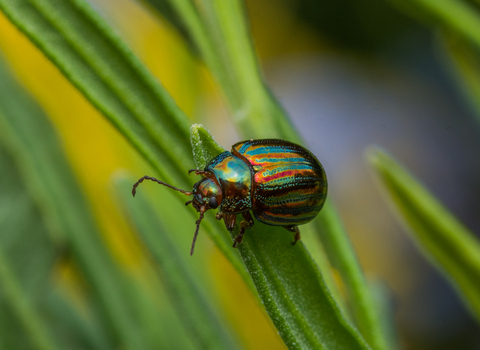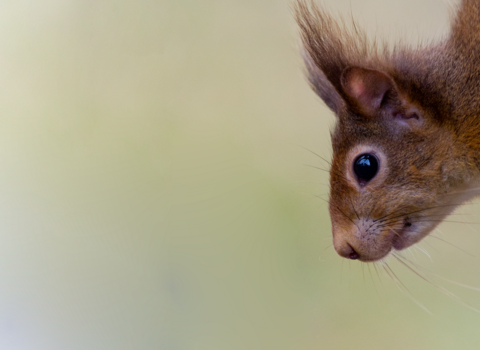
Rosemary beetle © Pete Richman
Rosemary beetle
This beautiful beetle only arrived in the UK in 1960s but is now a common sight on garden herbs.
Scientific name
Chrysolina americanaWhen to see
All year, but most obvious from spring to early autumnSpecies information
Category
Statistics
Length: 6-8 mmConservation status
Introduced and common
Habitats
About
These brightly coloured beetles are a common sight in many parks and gardens across the UK. As the name suggests, they feed on the leaves of herbs including rosemary, thyme, and lavender. They can often be found in large numbers on their host plants. They feed busily in spring, but become less active in the warmest months of mid summer. They start feeding again in late summer, when females lay tiny, sausage-shaped eggs on the underside of the leaves. After hatching, the grey, slug-like larvae also feed on the leaves of herbs. When they're fully grown, the larvae travel down the plant and into the soil to pupate. They emerge as adults in spring, ready to start the cycle all over again. Adults can be present all year.Rosemary beetles have not always been found in the UK. They are native to the Mediterranean region of southern Europe, North Africa, and the Middle East. The shipping of herbs around Europe has helped them spread to new countries. The first rosemary beetle in the UK was found in Cheshire in 1963, then three more were discovered in Surrey in 1994. After that they quickly spread and became common around London. Now they are found widely across all countries of the UK.
How to identify
A small, shiny beetle with metallic green and purplish-red stripes along its back. The head and section of the body behind it are metallic green with some reddish markings. The legs are a pale reddish colour.Larvae have a fat, slug-like grey body with dark stripes. They have a dark head and dark legs. They can grow up to 8 mm long.

